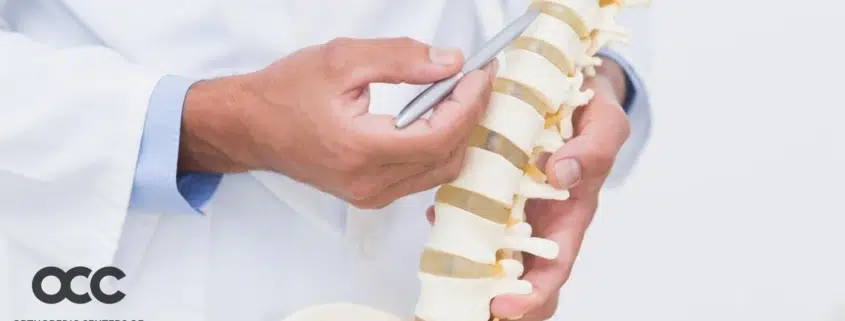Treatment of Spine Fractures in Adults
Spine fractures in older adults can be the result of trauma or disease. Depending on the age and health of the person, even relatively minor falls can lead to a spine fracture. Fractured vertebrae treatments include both non-surgical and surgical options. In either circumstance, timely treatment of spine fractures can limit the long-term effects.
Lack of prompt attention can significantly impact the resulting spinal deformity (known as kyphosis). Without proper treatment, spinal fractures will still heal but they do so in a collapsed position that leads to loss of mobility. Vertebral fractures can be incredibly painful, which leads to dramatic limitations in activity and reduced quality of life. Prompt treatment allows the vertebrae to heal in its proper position as the bone hardens.
Types of Spine Fractures
Fractures include compression fractures, burst fractures, or fracture-dislocations. Vertebral compression fractures are often the result of deteriorated bone health (osteoporosis). Burst fractures and dislocations – generally the result of trauma – can create spinal instability and spinal cord damage.
Vertebrae are effective shock absorbers, but advanced age and health can reduce their resilience. Osteoporosis is a major risk factor for older adults that renders vertebrae susceptible to spinal fractures. The force of a fall can cause a portion of the vertebrae to fail (compression fracture) or, if the force is severe enough, lead to the failure of the entire vertebral column (burst fracture). Cancers such as metastatic tumors, bone marrow cancer, and benign vascular tumors can also lead to vertebrae damage.
Fractured Vertebrae Treatment
Braces are a common example of an initial non-surgical approach to fractured vertebrae treatment. A specialized brace immobilizes the vertebrae and limits movement throughout a prescribed recovery period (up to 12 weeks). Braces offer a conservative option for compression fractures.
Kyphoplasty is a surgical procedure frequently used for fractured vertebrae treatment. This relatively new medical advancement uses bone cement to restore the vertebral body and provide supplemental strength. Kyphoplasty is minimally invasive and highly successful.
Kyphoplasty generally takes less than one hour can be performed as an outpatient procedure or, as individual circumstances warrant, with an overnight patient stay. Advance imagery (x-ray, MRI) helps your physician assess the viability of kyphoplasty as a treatment option for the vertebral fracture.
How is a Kyphoplasty Performed?
During a kyphoplasty, the damaged vertebrae is accessed by placing the patient face down on the operative table. A fluoroscope guides a needle to and through the bone to the optimal point, while avoiding the spinal cord. Balloon tamps are used to raise the fractured vertebrae to its normal height. When the deflated balloon is removed, bone cement is injected into the newly created cavity to support the vertebrae’s regained structure. The needle is withdrawn, and the cement hardens in its new shape.
Recovery
Patients typically find noticeable pain relief following the procedure and can usually begin walking within hours of the procedure. Depending on individual patient circumstances, some restrictions may limit your activity. Bending or twisting your back, lifting anything heavier than 5 pounds, or strenuous activities are generally restricted for the first few days.
With proper physician guidance, most kyphoplasty patients can resume many normal activities shortly thereafter. Braces may be employed to support healing for a period of six to twelve weeks. A multi-week physical therapy program is common to help maximize patient recovery.
Is Kyphoplasty Right for Me?
Like any surgical procedure, there are risks to be considered. Risks of kyphoplasty include nerve injury, infection, bleeding, bone cement leakage, and stiffness.
Kyphoplasty is a generally a viable treatment option for fractured vertebrae in older adults that are the result of osteoporosis, tumors, multiple myeloma, and trauma. Kyphoplasty is not generally used for chronic vertebrae fractures, bone infections, or bleeding disorders.
To learn more about kyphoplasty, schedule an appointment with Dr. Douglas Crowther, Nurse Practitioner Brianne Wagner, FNP-BC and our spine team.

